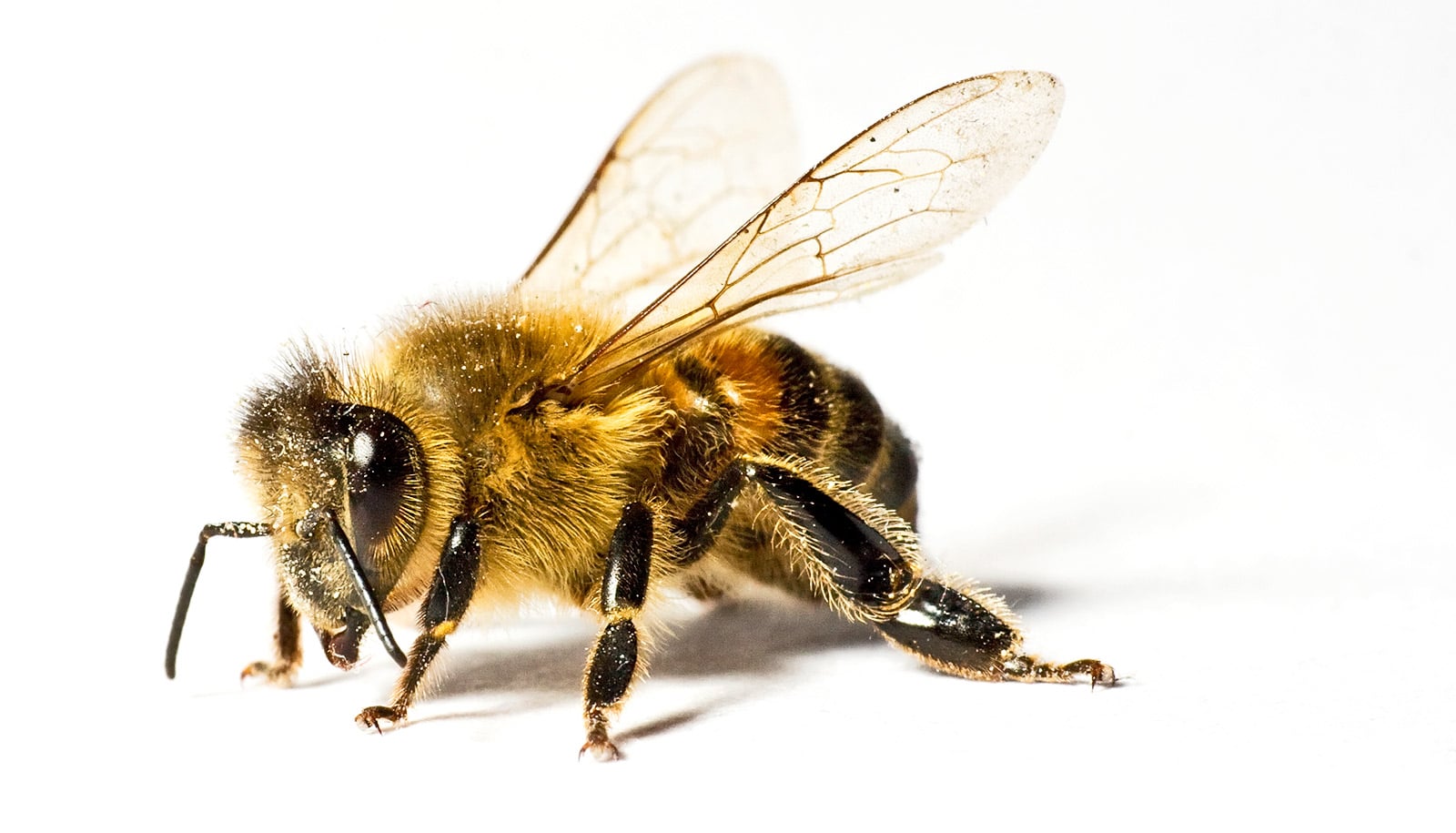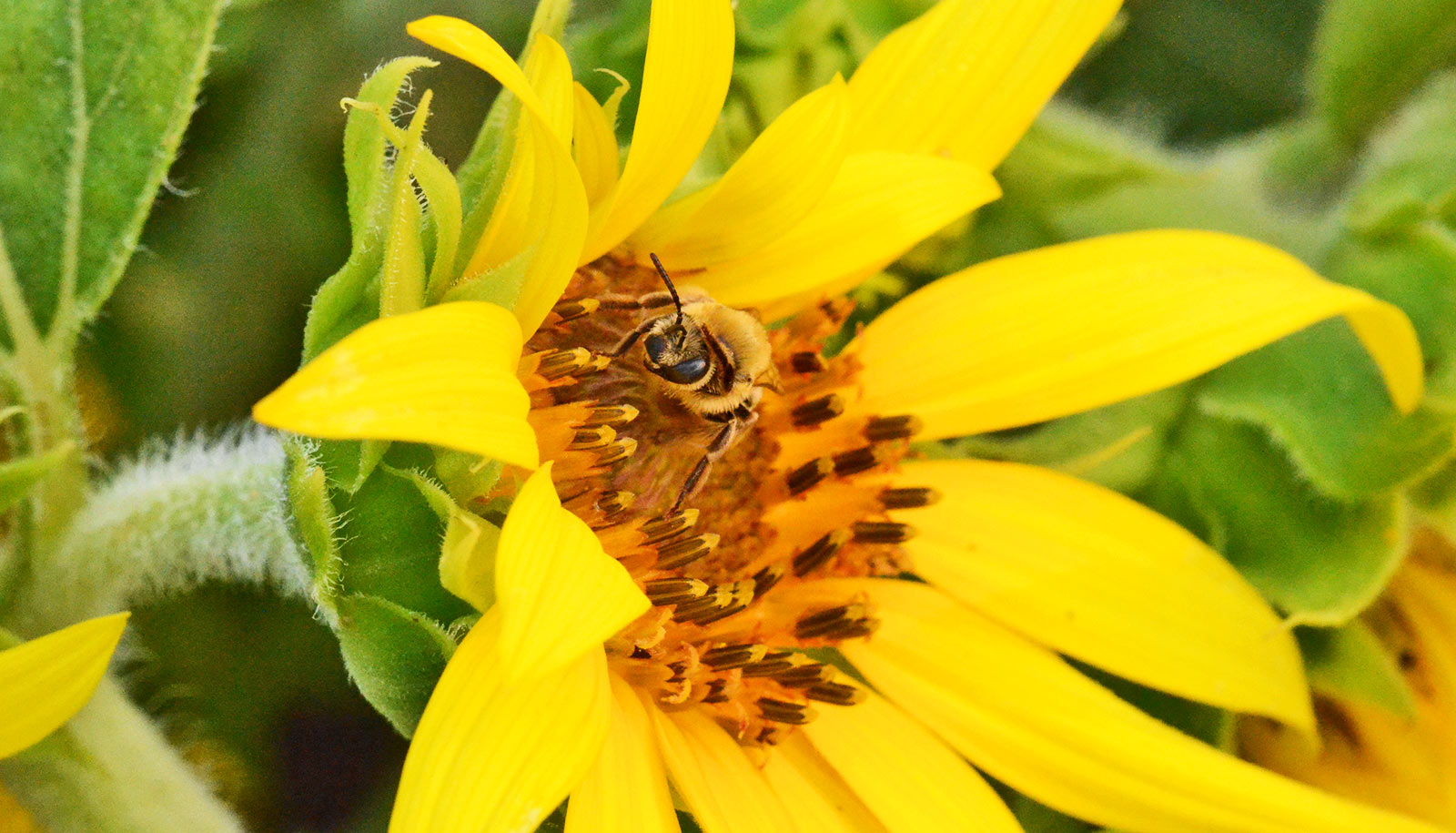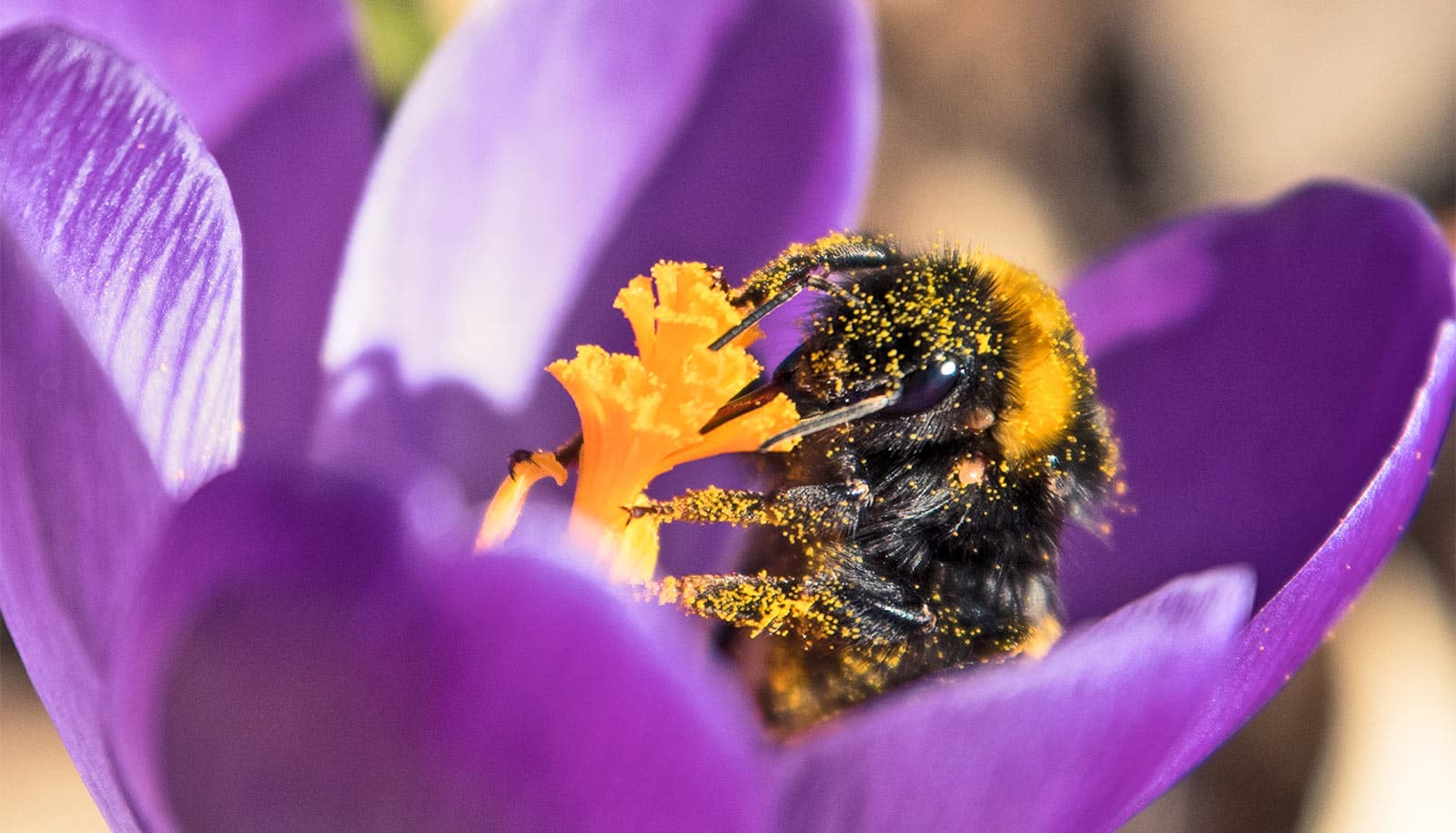A new study reveals that honeybee dance “styles” sway food foraging success.
As far as animals go, honey bees are world-class dancers.
The bees’ moves, known as the “waggle” dance, convey very specific food foraging instructions to their nestmates. The direction the dancer moves explains to other bees which way to go, and the duration of the waggle dance, or the “run,” shows how far to go.
Once other bees have been convinced to follow the directions, they are “recruited.” After receiving the instructions, these recruits leave the hive to find the food their sisters were so excited about.
Unfortunately, many of these recruited bees do not always successfully find the food they set out in search of.
Margaret Couvillon, associate professor in the entomology department in the College of Agriculture and Life Sciences at Virginia Tech, and her former PhD student Laura McHenry wanted to find out why.
Why do waggle dances fail?
Honeybees have had millions of years to perfect the waggle dance, so it may be surprising to learn that it doesn’t often work. Even though it was first described by scientists over 80 years ago, there is still a lot about the waggle dance that we don’t understand.
Couvillon has learned several interesting patterns related to this form of communication. One such observation was that bees have consistent, unique ways of dancing, meaning each bee has its own “style” that it adds to the communication.
Could the success of the waggle dance be related to this uniqueness? Would bees that communicated similarly yield more successful recruits? Or is there some other factor at play?
This study reveals the waggle to be a diverse form of communication that helps improve the likelihood that one bee can tell another where food can be found.
“Although the waggle dance itself is fascinating, my lab has additionally been intrigued about waggle dance miscommunication, or the hows and whys behind the failure of the dance recruitment,” Couvillon says.
To answer these questions, the Couvillon Lab devised an experiment utilizing clear-walled hives, video cameras, and a method of tagging bees so they could be tracked as individuals when they foraged and danced.
Each hive included foragers who had been taught the location of an artificial food source. These trained foragers performed a waggle dance to teach others where this food was, effectively training a new set of recruits. If successful in locating the food, these recruits returned to teach other bees what they learned.
Couvillon and her team hypothesized that bees with similar dance styles would more often successfully teach others how to find the food and communication that differed between bees would be less successful.
Whenever a new, tagged bee was observed at the food source, video of the hive was reviewed to determine which dancer had recruited that successful forager. This pattern of data collection allowed the researchers to track the dance the bees used, with each bee learning where the food was located from a slightly different telling. These successful dances were then compiled, and the run of each dance was measured and compared to the earlier dances. The pattern that emerged was not what the researchers expected.
The power of diversity
Based on the data from these dances, Couvillon and McHenry found that similar dance communication did not actually result in the most successful foraging, which was their original hypothesis. Dances that had a longer run, effectively telling the recruits to overshoot the food source, were more successful than dances describing similar, more accurate, distances.
This pattern suggested that the “overshooting” instructions may have led to additional opportunities to find the food, once on the way past the food source and again on the way back to the hive. They theorized that the foragers having a second chance to find the food source increased the chance that they find it at all.
What does this mean for understanding the honeybee waggle dance? One takeaway is the importance of these unique communication styles, where individual dance mannerisms enhance communication success. If every bee communicated the same, the likelihood of foragers reaching the food would decrease as compared to having a diverse set of styles.
This study adds effective dance moves to the list of known benefits of individuality, showing that a diverse set of communication skills helps improve the likelihood that one bee can tell another where food can be found, all through dance.
“We’ve known for a while that behavioral and genetic diversity benefit honeybees, allowing for superior thermoregulation, disease resistance, growth, and foraging,” says Couvillon. “Now we have also seen that diverse communication enhances recruitment success.”
The paper appears in Current Biology.
Couvillon’s research was supported by the National Institute of Food and Agriculture, the Foundation for Food and Agriculture Research, and the Department of Entomology at Virginia Tech.
Source: Virginia Tech



